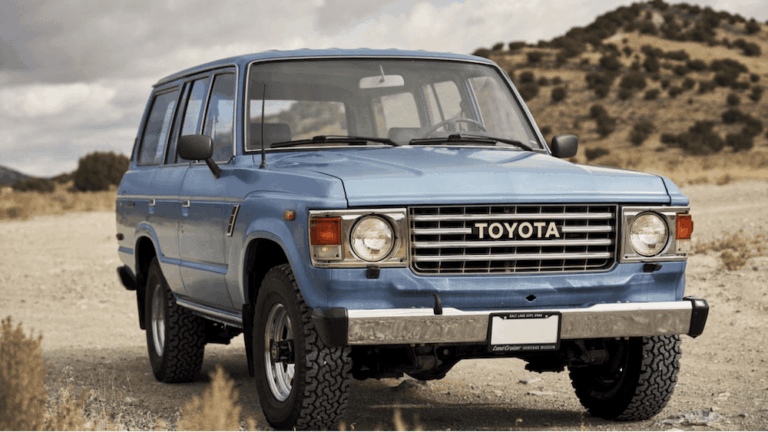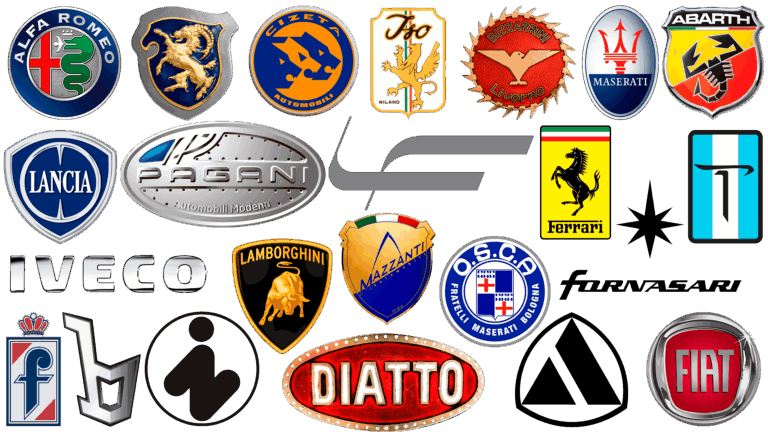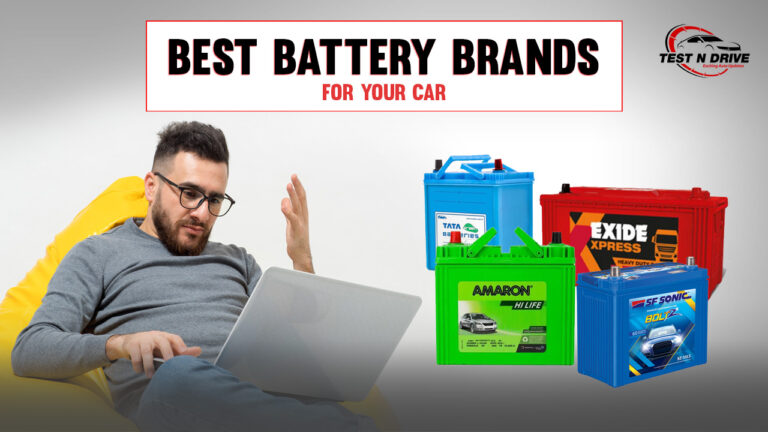VW Group Car Brands: A Comprehensive Guide to an Automotive Empire
VW Group Car Brands: A Comprehensive Guide to an Automotive Empire cars.truckstrend.com
In the sprawling landscape of the global automotive industry, few entities command as much influence and diversity as the Volkswagen Aktiengesellschaft, commonly known as the VW Group. More than just the manufacturer of the beloved "people’s car," the VW Group is a colossus, an automotive empire encompassing a remarkable portfolio of brands, each with its unique identity, heritage, and market positioning. From economical family cars to ultra-luxury grand tourers and high-performance supercars, the Group’s reach is unparalleled, catering to nearly every segment of the automotive market.
This article delves deep into the fascinating world of VW Group car brands, exploring the strategic rationale behind its multi-brand approach, the distinct characteristics of each marque, and the powerful synergies that underpin this automotive giant. Whether you’re a prospective buyer, an automotive enthusiast, or simply curious about the mechanics of a global conglomerate, understanding the VW Group’s brand architecture offers invaluable insights into the complexities and innovations of modern vehicle manufacturing.
VW Group Car Brands: A Comprehensive Guide to an Automotive Empire
The Core Philosophy: Why So Many Brands?
The VW Group’s multi-brand strategy isn’t merely a collection of acquisitions; it’s a meticulously crafted approach designed to maximize market penetration, leverage technological advancements, and achieve significant economies of scale. The rationale behind owning such a diverse portfolio is multifaceted:
- Market Segmentation: Each brand targets a specific demographic and price point, from budget-conscious buyers to the ultra-wealthy, ensuring the Group has an offering for almost every consumer need.
- Technological Synergies: By sharing platforms, engines, transmissions, and infotainment systems across brands, the Group can significantly reduce research and development costs while accelerating innovation.
- Economies of Scale: Centralized purchasing of components and materials for multiple brands leads to better pricing from suppliers, enhancing profitability.
- Risk Diversification: Performance fluctuations in one market or segment can be offset by stronger performance in others, providing greater stability for the overall Group.
- Preservation of Heritage: Acquiring struggling but iconic brands (like Bentley or Lamborghini) allowed VW Group to inject capital and technology, preserving their unique heritage while integrating them into a financially robust structure.

This strategic expansion, largely spearheaded by Ferdinand Piëch in the late 20th and early 21st centuries, transformed Volkswagen from a single-brand manufacturer into a global powerhouse.
The Volume Brands: Pillars of the Empire
These brands form the backbone of the VW Group, responsible for the majority of its sales volume and market presence.
Volkswagen (VW)
The flagship brand and the namesake of the Group, Volkswagen translates to "people’s car." It is renowned for its blend of quality, practicality, innovation, and broad appeal. From the iconic Golf and Passat to the popular Tiguan SUV and the rapidly expanding ID. family of electric vehicles, VW aims to deliver reliable and technologically advanced cars for the mainstream market. It’s at the forefront of the Group’s electrification efforts, investing heavily in EV platforms and battery technology.
Skoda
Originating from the Czech Republic, Skoda has undergone a remarkable transformation under VW Group ownership. Once perceived as a budget brand, Skoda now stands for exceptional value, clever practicality, robust engineering, and impressive interior space. Its "Simply Clever" philosophy manifests in numerous thoughtful features. Models like the Octavia, Superb, and Kodiaq have propelled Skoda into a highly respected position, often offering VW Group technology at a more competitive price point.
SEAT
Spain’s vibrant contribution to the Group, SEAT (Sociedad Española de Automóviles de Turismo) is positioned as the youthful, sporty, and design-driven brand. It targets a younger demographic with dynamic styling, engaging driving dynamics, and a focus on connectivity. Models like the Leon and Ibiza are popular choices. In recent years, SEAT has also spawned a performance sub-brand, Cupra, which has since become a standalone brand offering sportier, more emotionally charged vehicles, including electric models.
Audi
At the upper end of the volume segment and transitioning into premium luxury, Audi is a German powerhouse synonymous with "Vorsprung durch Technik" (Advancement through Technology). It offers sophisticated design, luxurious interiors, advanced technology (including its renowned Quattro all-wheel-drive system), and strong performance. Audi competes directly with Mercedes-Benz and BMW, offering a full range from compact cars (A3) to executive sedans (A6, A8), SUVs (Q series), and high-performance S and RS models, along with a growing e-tron line of EVs.
Volkswagen Commercial Vehicles
While often overlooked in passenger car discussions, Volkswagen Commercial Vehicles is a significant part of the Group, producing vans, pick-up trucks, and light commercial vehicles. Iconic models include the Transporter (known globally as the Kombi or Microbus in its earlier iterations), Crafter, and Amarok, serving businesses and adventure seekers alike.
The Luxury and Performance Elite
These brands represent the pinnacle of automotive engineering, design, and exclusivity within the VW Group.
Porsche
A legendary German sports car manufacturer, Porsche is synonymous with high performance, precision engineering, and iconic design. While best known for the 911, Porsche has successfully expanded its lineup to include popular SUVs (Cayenne, Macan) and a critically acclaimed electric sports car, the Taycan. Porsche consistently delivers exhilarating driving experiences combined with everyday usability, making it one of the most profitable brands in the automotive world.
Bentley
The epitome of British luxury and craftsmanship, Bentley produces ultra-luxury sedans, coupes, and SUVs. Acquired by VW Group in 1998, Bentley cars are handcrafted, offering unparalleled levels of bespoke customization, exquisite materials, and effortless power. Models like the Continental GT, Flying Spur, and Bentayga represent the pinnacle of automotive opulence.
Lamborghini
The Italian purveyor of extreme supercars and hyper-SUVs, Lamborghini is known for its dramatic, angular designs, naturally aspirated engines (though moving towards hybrids), and blistering performance. Models like the Huracán, Aventador, and the groundbreaking Urus SUV embody raw power and unadulterated passion, making them dream machines for enthusiasts worldwide.
Ducati
While not a car brand, Ducati is a highly respected Italian manufacturer of motorcycles, renowned for its performance-oriented bikes, distinctive desmodromic valve engines, and racing pedigree. Its inclusion in the VW Group (via Audi) further diversifies the portfolio into the premium two-wheel segment.
MAN & Scania
These are the Group’s heavy commercial vehicle specialists. MAN (Maschinenfabrik Augsburg-Nürnberg) is a German manufacturer of trucks, buses, and industrial engines. Scania is a Swedish manufacturer focusing on heavy trucks, buses, and marine and industrial engines. Together, they form TRATON SE, a subsidiary of the VW Group, dominating a significant portion of the global heavy transport market with their robust and efficient vehicles.
Strategic Advantages and Synergies
The multi-brand structure isn’t just about diversification; it’s about leveraging shared resources for competitive advantage:
- Modular Platforms: The VW Group pioneered the concept of modular platforms like MQB (Modular Transverse Matrix) for smaller, transverse-engined cars, MLB (Modular Longitudinal Matrix) for larger, longitudinal-engined cars, and more recently, MEB (Modular Electric Drive Matrix) and PPE (Premium Platform Electric) for EVs. These platforms allow different brands and models to share core architectures, reducing development time and costs while still allowing for distinct brand identities through design, tuning, and interior execution.
- Shared Technology: Engines, transmissions, infotainment systems, driver-assistance features, and even battery technology are often developed once and then adapted for use across multiple brands, ensuring cutting-edge technology trickles down efficiently.
- Global Reach and Production Network: The Group operates manufacturing facilities and sales networks across the globe, enabling it to adapt to local market demands and economic conditions.
- Electrification Strategy: With massive investments, the VW Group is leading the charge in electric mobility, aiming to offer an electric version across all its key brands, from the mass-market ID. series to electric Porsches and Audis.
However, this complexity also brings challenges, such as managing brand differentiation, avoiding internal cannibalization, and navigating supply chain complexities for such a vast operation. The "Dieselgate" scandal also highlighted the risks associated with centralized decision-making in such a large organization.
Understanding the Brand Hierarchy and Market Positioning
The VW Group skillfully manages a clear hierarchy among its brands, ensuring each occupies a distinct niche and minimizes direct competition within the family.
- Entry-Level & Value: Skoda, SEAT (and now Cupra)
- Mainstream & Volume: Volkswagen
- Premium & Technology: Audi
- Sports Car & Performance Luxury: Porsche
- Ultra-Luxury: Bentley
- Exotic Supercar: Lamborghini
This structured approach allows the Group to capture a wider share of the global automotive market, offering a progressive ladder of options for consumers as their needs, preferences, and budgets evolve.
Practical Advice and Actionable Insights
For anyone considering a vehicle from the VW Group, here’s some practical advice:
- Define Your Needs: The sheer variety means there’s likely a VW Group car for you. Clearly define your budget, desired performance, luxury level, practicality requirements, and brand preference before diving into specific models.
- Understand Platform Sharing: While many VW Group cars share platforms and components, this does not mean they are identical. Each brand tunes its vehicles differently (suspension, steering, engine mapping), uses distinct interior materials, and applies its unique design philosophy. A Skoda Octavia and a VW Golf may share a platform, but their driving feel, interior ambiance, and brand image are distinctly different.
- Leverage Synergies: The shared technology often means excellent reliability and widespread parts availability. The extensive service network across various brands can also be a benefit for maintenance and repairs.
- Consider Future Trends: With the Group’s aggressive electrification strategy, prospective buyers interested in EVs have a growing number of compelling options across various brands, from the accessible VW ID. series to premium Audi e-trons and Porsche Taycans.
- Research Specific Models: Don’t assume all models within a brand are the same. A VW Polo drives very differently from a Touareg, just as an Audi A4 differs from an R8. Always research the specific model that interests you.
Concluding Summary
The Volkswagen Group stands as a testament to strategic vision, engineering prowess, and marketing acumen. Its multi-brand empire is a masterclass in market segmentation, technological synergy, and global scale. By carefully nurturing distinct brand identities while leveraging shared resources, the Group has built an automotive powerhouse that touches nearly every facet of personal and commercial mobility. As the industry transitions towards electric vehicles, autonomous driving, and new mobility solutions, the VW Group, with its vast resources and diverse portfolio, is uniquely positioned to shape the future of transportation, continuing its legacy of innovation and leadership on a global stage.
VW Group Car Brands: Representative Starting Price Ranges
Please note: Prices are highly variable based on model, trim level, optional features, region, taxes, and market conditions. These are representative starting price ranges in USD for entry-level models to give a general idea of each brand’s market positioning.
| Brand | Primary Market Segment | Representative Starting Price Range (USD) | Key Characteristics |
|---|---|---|---|
| Volkswagen (VW) | Mainstream, Mass Market | $23,000 – $45,000+ | Practical, innovative, quality, broad appeal, strong EV focus. |
| Skoda | Value-oriented, Practical | $22,000 – $40,000+ | Excellent value, "Simply Clever" features, spacious, robust engineering. |
| SEAT | Youthful, Sporty, Design-led | $21,000 – $38,000+ | Dynamic styling, engaging driving, connectivity, Spanish flair. |
| Cupra | Performance, Sporty Premium | $35,000 – $60,000+ | Standalone brand from SEAT, performance-focused, distinctive design, electrification. |
| Audi | Premium, Luxury, Technology | $38,000 – $100,000+ | Sophisticated design, advanced tech, luxurious interiors, Quattro AWD, strong EV presence. |
| Volkswagen Commercial Vehicles | Light Commercial, Vans | $30,000 – $60,000+ | Reliable vans, pick-ups, and commercial solutions (e.g., Transporter, Crafter). |
| Porsche | Sports Car, Performance Luxury | $65,000 – $200,000+ | Iconic sports cars, precision engineering, thrilling performance, growing SUV and EV lineup. |
| Bentley | Ultra-Luxury, Grand Touring | $200,000 – $350,000+ | Exquisite craftsmanship, bespoke options, powerful engines, ultimate luxury. |
| Lamborghini | Exotic Supercar, Hyper-SUV | $230,000 – $500,000+ | Extreme performance, dramatic design, exclusive, high-adrenaline driving. |
| Ducati | Premium Motorcycles | $10,000 – $30,000+ | High-performance motorcycles, distinctive engines, racing heritage. (Part of Audi Group within VW). |
| MAN | Heavy Commercial Vehicles | Varies widely by model and configuration | Trucks, buses, industrial engines for heavy-duty applications. (Part of TRATON SE). |
| Scania | Heavy Commercial Vehicles | Varies widely by model and configuration | Heavy trucks, buses, marine and industrial engines, focus on fuel efficiency. (Part of TRATON SE). |
Frequently Asked Questions (FAQ) about VW Group Car Brands
Q1: How many car brands does the VW Group own?
A1: As of late 2023/early 2024, the Volkswagen Group directly owns ten passenger car and motorcycle brands: Volkswagen, Audi, SEAT, Cupra, Skoda, Porsche, Bentley, Lamborghini, and Ducati (motorcycles). Additionally, it owns two major heavy commercial vehicle brands: MAN and Scania (under the TRATON SE subsidiary).
Q2: What is the main difference between VW and Audi cars?
A2: While both are German brands within the VW Group and often share underlying platforms and technology, Audi is positioned as a premium and luxury brand, emphasizing sophisticated design, higher-quality materials, advanced technology (like Quattro AWD), and a more refined driving experience. Volkswagen is the mainstream, volume brand, focusing on practicality, reliability, and value for money for a broader consumer base.
Q3: Do all VW Group cars use the same parts?
A3: No, not all parts are the same. However, VW Group extensively uses modular platforms (like MQB, MEB) and shares many common components such as engines, transmissions, infotainment systems, and certain electronic modules across its brands. This allows for economies of scale and faster development, but each brand then customizes and tunes these components, uses different materials, and applies unique designs to create distinct vehicles.
Q4: Is Bugatti still part of the VW Group?
A4: Bugatti is no longer fully owned by the VW Group. In 2021, Volkswagen transferred the Bugatti brand to a new joint venture called Bugatti Rimac, where Rimac Group holds a 55% stake and Porsche (a VW Group brand) holds 45%. This move strategically positions Bugatti for future hypercar development, particularly in electrification, alongside Rimac’s expertise.
Q5: What is the VW Group’s strategy for electric vehicles (EVs)?
A5: The VW Group has one of the most ambitious electrification strategies in the industry. It is investing billions in EV development, dedicated EV platforms (like MEB and PPE), battery technology, and charging infrastructure. Its goal is to offer a comprehensive range of electric vehicles across all its key brands, from mass-market VW ID. models to premium Audi e-trons and high-performance Porsche Taycans, aiming to become a global leader in electric mobility.
Q6: Why did VW Group acquire so many luxury and performance brands?
A6: The acquisition of luxury and performance brands like Audi, Porsche, Bentley, and Lamborghini was a strategic move to:
- Expand market reach: Capture high-margin segments and diversify revenue streams.
- Showcase technological prowess: These brands often serve as showcases for cutting-edge technology that can later trickle down to volume brands.
- Leverage synergies: Share R&D, components, and production expertise across the group.
- Preserve heritage: Rescue and revitalize iconic brands, ensuring their survival and continued innovation under a stable financial umbrella.
- Enhance brand image: The halo effect of owning prestigious brands elevates the overall perception of the Volkswagen Group.




